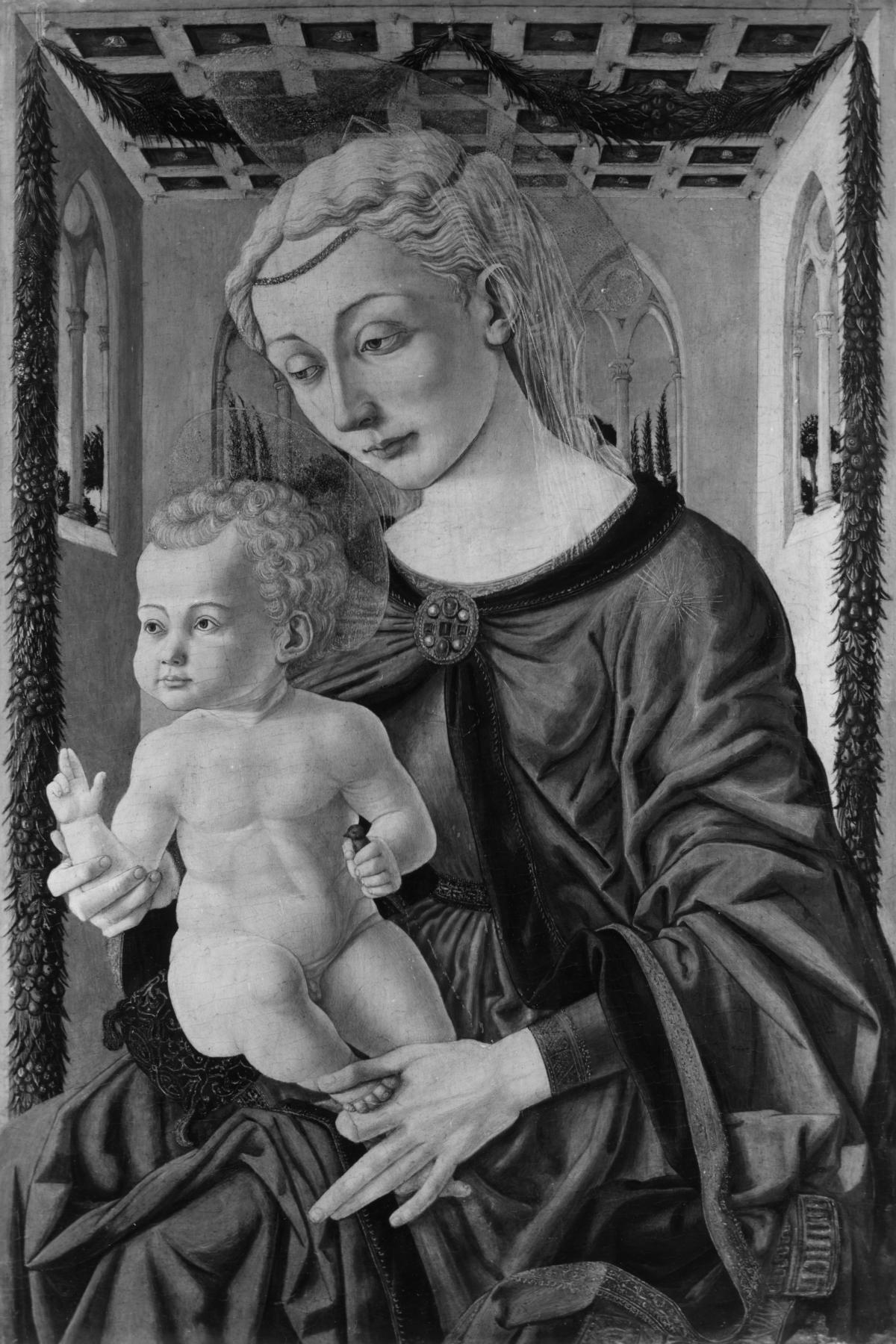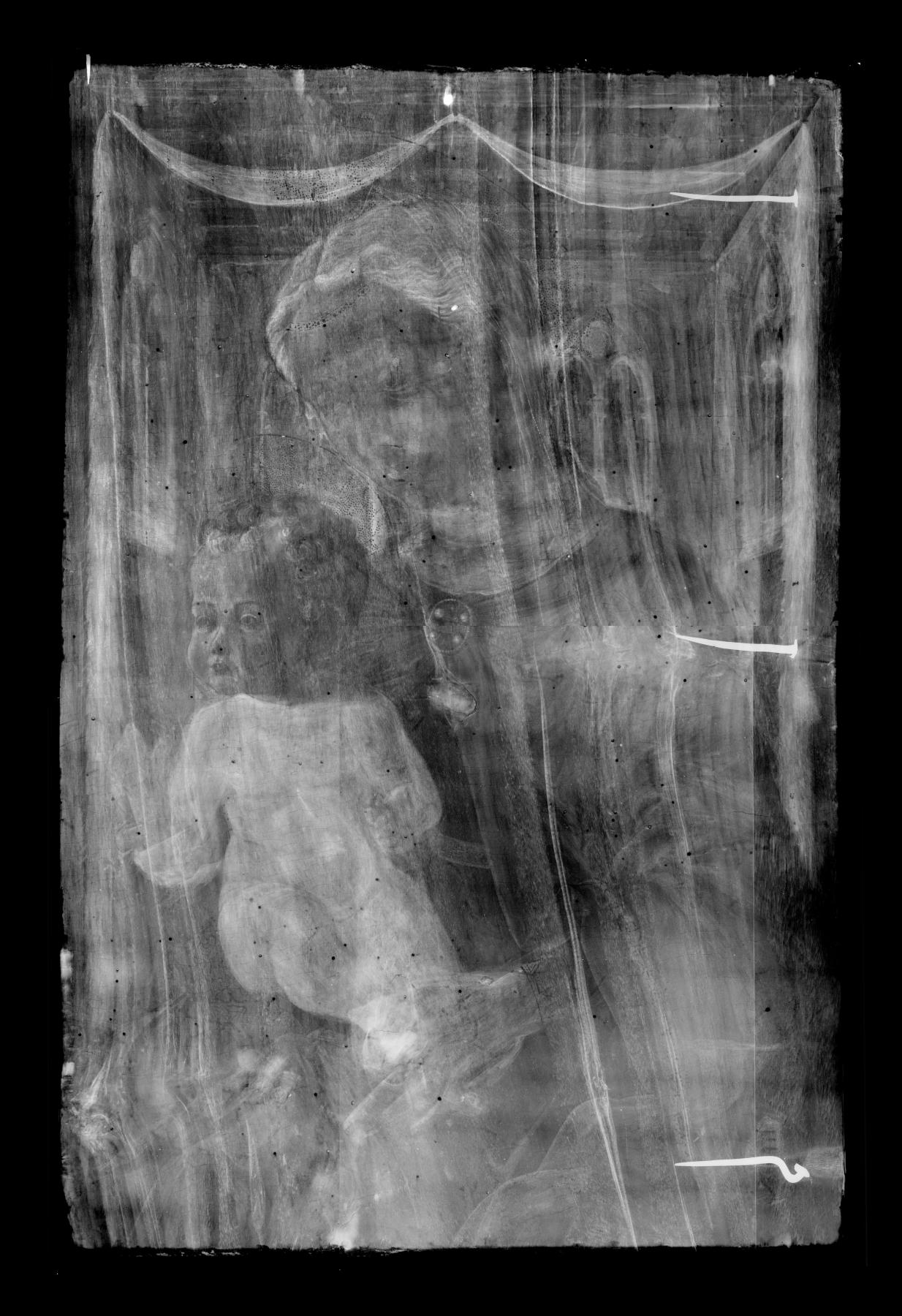Virgin and Child
(Renaissance Europe )
In this intimate devotional panel intended for a domestic interior, the Virgin and Child are placed in a box-like room lined with gothic windows and a coffered ceiling. A decorative floral garland frames the space behind the figures, lending a celebratory air. The Virgin is richly dressed in a bright blue cloak lined with green velvet and clasped together with a brooch of gemstones and pearls. The Christ Child, sitting on an embroidered cushion on his mother’s knee, holds a tiny swallow (a common symbol of his death and resurrection) and offers a gesture of blessing. While Mary focuses on her son, Jesus appears to look at someone in the viewer's space to whom he directs his gesture of blessing.
Painted in Florence around 1460, the picture has been associated with a number of different artists. The composition is loosely derived from a painting by Francesco Pesellino (ca. 1422-57) at the Isabella Stewart Gardner Museum in Boston, while the strong modeling and the careful description of anatomy—such as the veins in the Virgin’s hands and the musculature of the Christ Child—show parallels with the work of Piero del Pollaiolo (ca. 1441-85/96) and Andrea del Verrocchio (1435-88). In 1989 the painting was linked to a group of paintings by the hypothetical “Argonaut Master,” an anonymous painter whose name derived from a panel of “Jason and the Argonauts” at the Metropolitan Museum of Art in New York. Most of the Argonaut Master’s paintings have recently been reassigned to the early period of Jacopo del Sellaio (ca. 1441-93), who, however, was certainly not responsible for the Walters’ Madonna.
Inscription
Provenance
Provenance (from the French provenir, 'to come from/forth') is the chronology of the ownership, custody, or location of a historical object. Learn more about provenance at the Walters.
Henry Walters, Baltimore, prior to 1922 [mode of acqusition unknown]; Walters Art Museum, 1931, by bequest.
Exhibitions
| 2006-2009 | Bedazzled: 5,000 Years of Jewelry from the Walters Art Museum. Frist Center for the Visual Arts, Nashville; The John and Mable Ringling Museum of Art, Sarasota; The Walters Art Museum, Baltimore. |
| 1868 | National Exhibition of Works of Art at Leeds. Leeds. |
Conservation
| Date | Description | Narrative |
|---|---|---|
| 1/7/1958 | Treatment | coated; examined for exhibition; inpainted; stabilized |
| 12/1/2004 | Examination | examined for condition |
Geographies
Italy, Florence (Place of Origin)
Measurements
Painted surface H: 30 1/2 x W: 20 3/16 x Approx. D: 1 3/16 in. (77.4 x 51.2 x 3 cm)
Credit Line
Acquired by Henry Walters, before 1922
Location in Museum
Accession Number
In libraries, galleries, museums, and archives, an accession number is a unique identifier assigned to each object in the collection.
In libraries, galleries, museums, and archives, an accession number is a unique identifier assigned to each object in the collection.
37.536






